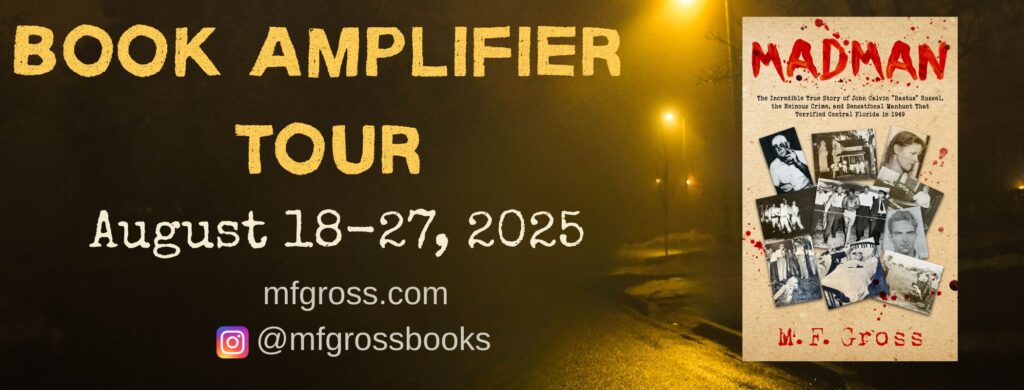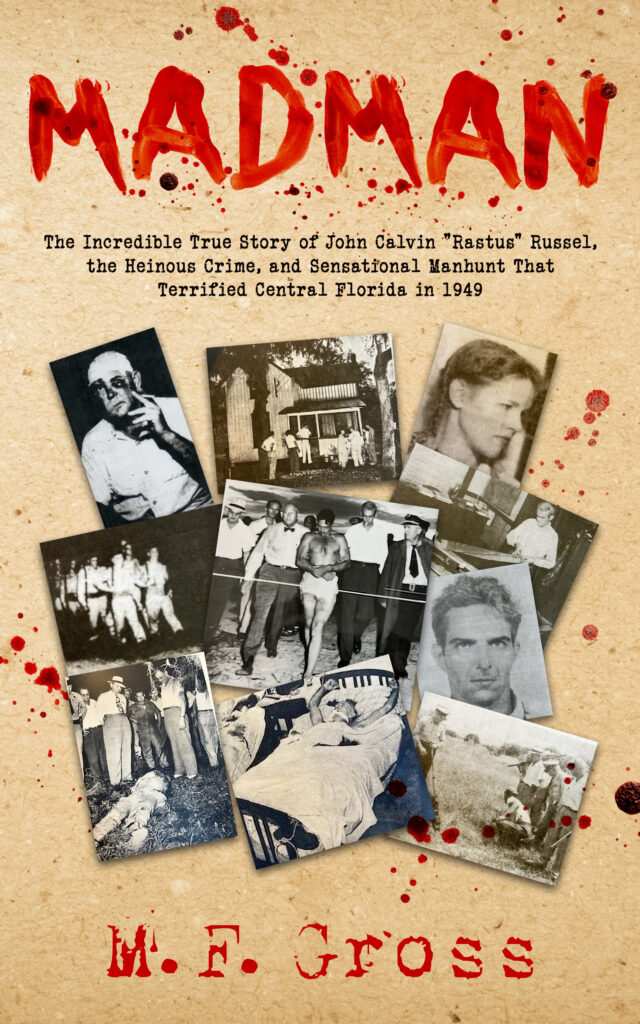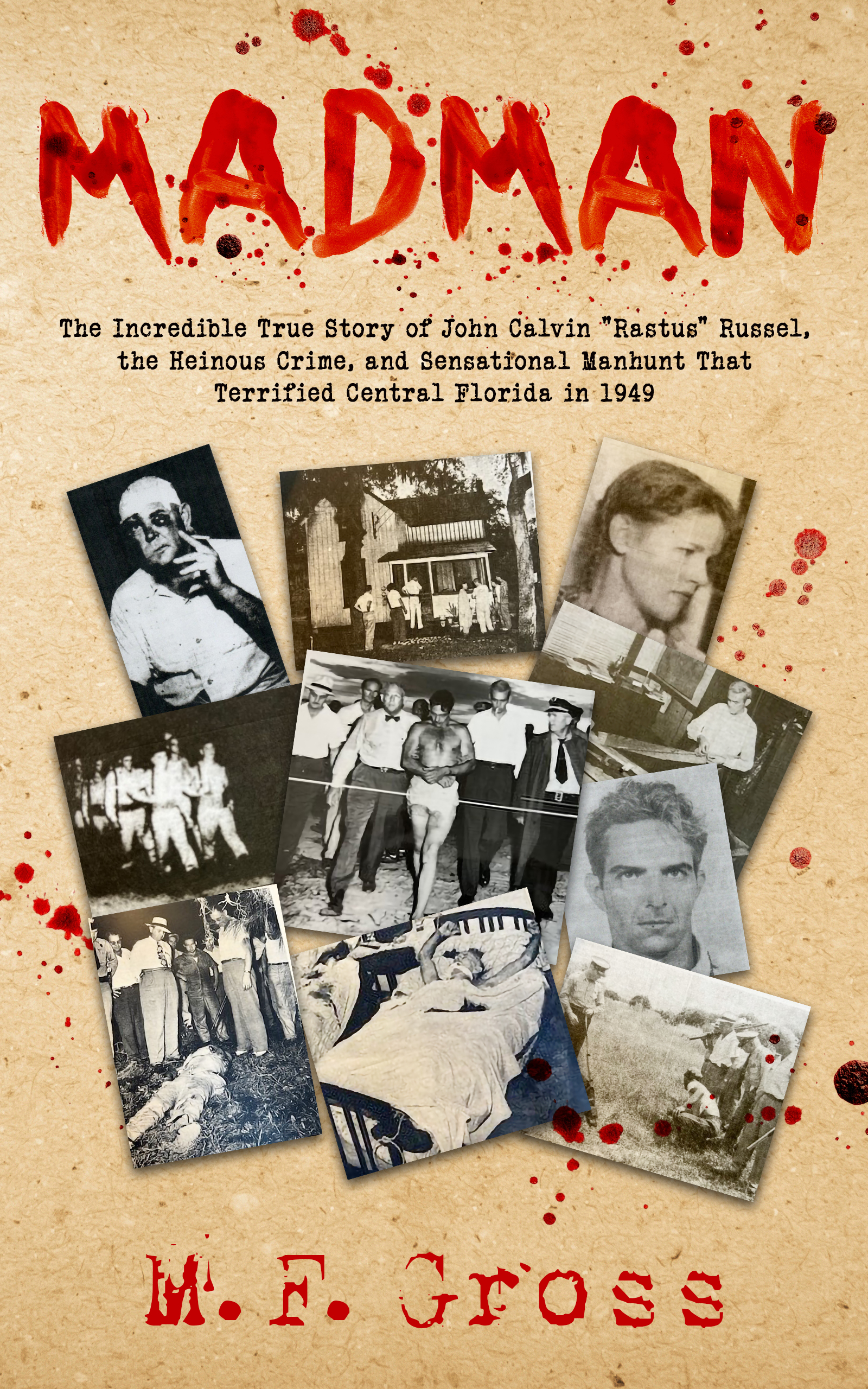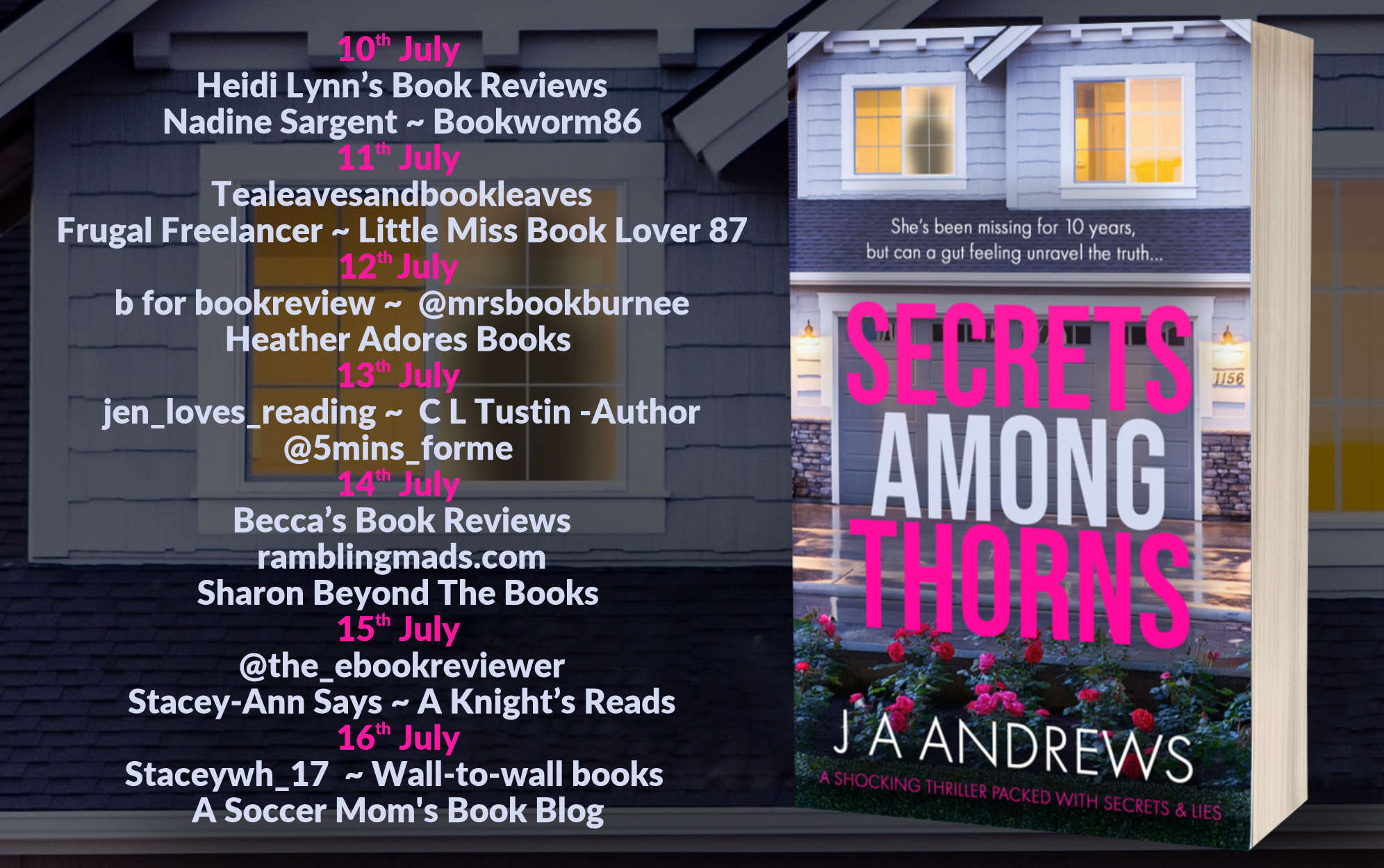I’ve partnered with a new group, Author Marketing Experts, to bring you even more amazing books and author interactions.
Madman book amplifier tour includes an author guest post, detailed Q & A, and exclusive excerpt. Explore, share, comment, and subscribe to Sarandipity’s. Don’t forget to check out today’s email and the latest products in the shop.

- LAST CHANCE! Open Immediately: A buck today, profits tomorrow 💸
- Open for Your Weekly Business Offers and Fun Holiday Craft Events – Respond to Stay with Sarandipity's
- Open and Respond if You Want to Stay Part of Sarandipity's Crew
- Happy Halloween! It's Time for Lots of Treats with No Tricks and More…
- 28 Building Boosting Resources for $0
- Have You Signed Up for These Gifts, Challenges, and Summits to Close Out Spooky Season?
- 15+ Contributors. 25+ Resources. One power-packed Bundle.
- 👻 31 Days of Spooky Fun + Biz Spotlights!
- Open Fast – It's the Last Day and It's Also the First Day of The Best Months of Your Business
- It's Your Weekly Dose of Events, Gifts, Seasonal Trends, and More – Open Now or Regret It
Book Intro

There are stories that get told—and stories that slip through the cracks. Madman by M.F. Gross
is a haunting excavation of one such forgotten crime: a 1949 Florida manhunt that rocked a
small town and has remained buried for generations.
M.F. Gross’s Madman is a true crime narrative that unearths a violent, long-buried chapter of
American history and breathes life into the forgotten lives at its core. In 1949, a young mother
was murdered in her home in the beachside community of Crystal Beach, Florida—a crime that
triggered a month-long manhunt and held the Gulf Coast in a grip of fear. The suspect, John
Calvin “Rastus” Russell, was a cunning and dangerous man—an escaped convict and former
psychiatric patient who became the center of one of the most intense, though largely forgotten,
criminal investigations in the state’s history. Madman explores this event not just through the
lens of true crime, but through a larger exploration of justice, community anxiety, and the fragility
of peace in postwar America. With vivid detail and emotional acuity, Gross takes readers
beyond the headlines to reconstruct a world in turmoil—and a society forced to reckon with its
limits.
Author Details

M.F. Gross is an investigative storyteller committed to excavating the hidden layers of our
shared past. His debut book, Madman, was born out of a chance archival discovery and
became a year-long obsession that took him deep into Florida’s historical records and
landscapes. With a background in financial writing and a passion for narrative nonfiction, Gross
brings precision and purpose to a story that could have remained lost. He blends the rigor of
journalism with the richness of literary storytelling to reanimate the fears, struggles, and
humanity of those who lived through one of the Gulf Coast’s most traumatic moments. A
longtime Florida Gulf Coast resident himself, Gross writes with both intimacy and urgency. Visit
him at his website and on Instagram.
Amazon: https://amzn.to/41fi0Mq
Goodreads: https://www.goodreads.com/book/show/235731573-madman
Author Guest Post
Exploring the Real Places that Inspired Madman
Madman, the true story of the 1949 crimes and manhunt for John Calvin “Rastus” Russell, is
rich with locations almost custom made for film. Russell’s crimes and incredible dash from the
law, led through the small towns, orange groves and swamps of rural Florida.
As part of my research, I visited these places to get a feel for not only the “vibe” of the book, but
connect the dots in the actual investigation of the story. Being “on site” while reviewing a 75-
year-old article, police report or memory can really put things in perspective, and give one an
enlightened view of events.
For instance, after Thelma Crum was attacked outside the Browne house the day of the murder,
she picked up her baby and ran 1/4 mile through a snake and mosquito infested palm thicket, to
the nearest neighbor’s house. She did this in the humidity drenched, 95-degree afternoon of
Florida in August.
As part of my research – to both measure time and get a small taste of how Thelma must have
felt, I went to the actual location of the murder. Then, carrying my 19-pound Sheltie (the
approximate weight of Thelma’s baby) I ran the exact route Thelma took to the neighbor’s
house. I did it at the same time of year (summer) at the same time of day (mid afternoon.) My
daughter trailed behind, timing the run.
Thankfully, the palm thicket is now a mowed field. And without a bloody gash on the top of my
head, I am certain that my run was easier than Thelma’s.
By the time I reached the neighbors house (which is still standing,) my lungs were bursting and I
was drenched in sweat (the Sheltie seemed a bit confused but otherwise unfazed.)
This tiny reenactment at the actual sight gave me a hint of insight when it came time to write
that part of the book.
While the actual murder house no longer exists (demolished in the 1980s,) many of the key
locations are delightfully still in existence. I highlighted and photographed several of these in the
book.
My favorites:
- The Dunedin Flats: The inlet where Russell was captured while scalloping with
friends. Today the flats are called Smith Bayou. Having been dredged in the
1950s, they no longer produce large quantities of scallops. However, the area
looks nearly identical to what it did in 1949, except for the development that has
grown up around it. The dock and marina where Russell was brought ashore
(and where his famous photograph was taken) after his capture are still in
existence. Walking on it seemed like hallowed ground. - The Little Church that police believed Russell was hiding near present day
Racetrack Road in Oldsmar, FL is still standing, along with the tiny wooden
outhouse beside it. Both were searched when police believed Russell was holed
up there. The doors that police burst through with guns drawn are still there.
Whether Russell was ever in the church is unknown. But he wasn’t there by the
time police arrived. It appears remarkably unchanged from 1949. - Kill Site – Lake Thonotosassa: Of all locations, my visit to Lake Thonotosassa,
the place where Russell both grew up and was killed, was most haunting. Like in
1949, Thonotosassa is a tiny, rural town about 16 miles northeast of Tampa.
Visiting is like time travel in and of itself. It is wild, beautiful country and still
mostly undeveloped – with many of the houses dating well before the 1950s.
Thick, towering oaks line the massive lake, their branches draped in Spanish
moss – giving the whole place a Southern Gothic feel. The people were open
and friendly. The older ones, even today, clearly remember Rastus Russell.
Names of roads and marina’s still carry the name of Russell’s mother’s family –
Baker. Russell was killed near the lake. Visiting there felt like walking with
ghosts. Other locations look and feel similar to 1949. But Lake Thonotosassa is
exactly like it was then. Russell’s mother’s grave, the one he is said to have
visited immediately before his violent death, still stands in tiny Thonotosassa
cemetery. It is believed Russell’s ashes are buried there as well. I stood in front
of it, like he must have, and felt both of their presences.
For more information on key locations from Madman, visit my website MFGross.com. We’ve
recorded several videos which feature my visits to many of the key sites and what they look like
today.
Author Q & A
Writing Process & Creativity
How did you research your book?
I started with pulling all newspaper and media files from the entire incident. From there, I
incorporated private researchers, a private detective (to locate survivors and descendants of
those involved – for interview purposes), visits to actual locations, police files, files from local
historical societies, ancestry.com, etc, etc, etc…. It was a time consuming but fascinating
process.
What’s the hardest scene or character you wrote—and why?
The hardest scene to write was the actual murder scene and what happened right before it. The
only witness was Mrs. Browne and she was not only hit on the head and likely suffering from
concussion, she may have had something to hide. Some of her explanations and time lines
simply do not make sense. I had to connect the dots on some of it.
Where do you get your ideas?
I never planned or aspired to be a true crime writer. I just discovered that this story happened in
my own neighborhood, just 100 yards from my house, 75 years ago. I became fascinated with it
and decided to write the book. It’s funny how second careers start!
What sets your book apart from others in your genre?
For one, it is a period piece. It happened in 1949 so part of it is recreating the time period.
Secondly, it’s not a straightforward true crime piece. It starts out as “Charles Manson comes to
1949 Mayberry.” But then it morphs into an action/adventure, cat and mouse like chase movie,
all wrapped within a twisted love story involving a teenaged girl. Oh yeah, and the judge that set
the killer free years earlier? He might have been his father.
What helps you overcome writer’s block?
I never had writer’s block. I pretty much just followed the story in chronological order – doing
flashback chapters here and there to add depth and context. When it was time to write a
chapter, I’d organize all the source material I had for that topic and go to work. That’s the great
part about writing non-fiction – you don’t have to make anything up. It’s all organizing and
deciding how you want to present it.
What’s your favorite compliment you’ve received as a writer?
“I couldn’t stop reading it. I had to find out what happened next.” When one of my beta readers
said that, I knew I’d done something right.”
Your Writing Life
Do you write every day? What’s your schedule?
When I’m working on a book, I write almost every day – usually 5-6 days a week. It’s not like
work to me. It’s pure flow, like meditation. For this book, I typically would write 2-3 hours per day
– sometimes a little more if I was on a roll. My write time was mid to late afternoon. I think it was
Stephen King who said anything more than 4 hours per day and your brain turns to mush.
Where do you write—home, coffee shop, train?
I’m a closet introvert so home is my castle. I can’t write anywhere else.
Any quirky writing rituals or must-have snacks?
Not really. Well, yes, I guess I would typically have an ice coffee before I started. Milk, no sugar.
I’d put enough milk in so it looked like a White Russian in a glass.
Behind the Book
Why did you choose this setting/topic?
The crime happened about 100 yards from my house. So I was literally living on top of the
former crime scene. That connection fascinated me – and I believe walking near that and other
related sites regularly during the writing allowed me to absorb some of the energy from it. I know
it sounds strange but it felt real.
If your book became a movie, who would star in it?
Funny you should mention that. I hired a screenwriter to adapt the book to a film script. He has
not only shopped it but got call backs from 3 major studios. We’re keeping our fingers crossed.
Anyway, the tone of the book reminds me of HBO’s True Detective, season one. I’d love for
Matt McConaughey or Woody Harrelson to play the detectives. Matt or Woody, if you’re reading
this, we could make magic together!
Which author(s) most inspired you?
I’ve always been a huge Hemingway fan and read most of his books when I was in my 20s. I’ve
also read his tips and advice on writing style. Also, I don’t read a lot of Stephen King’s books
(although The Shining is a classic) but his book on writing is fantastic. He is also hilarious in
person – the opposite of what you would expect from his work. You start to get the feeling that
all of his terrifying, weird stories are done tongue in cheek – which makes them even more
enjoyable.
Fun & Lighthearted Qs
What’s your go-to comfort food?
Oh, ice cream -without a doubt. Sad, stressed, anxious, – it will do the trick. Vanilla with a
spoonful of peanut butter – or if I’m feeling really indulgent, peanut butter fudge.
What are you binge-watching right now?
Landman, Mobland, and old Sean Connery James Bond flicks.
If you could time-travel, where would you go?
Probably the roaring twenties (1920s.) It was a very romantic time in history and modern
lifestyles were just starting to take shape. The other time would probably be colonial times in the
1700s right before the American Revolution. Not during the war though. It gets romanticized
now but it was a terrible time for those who experienced it.
What three books would you bring to a desert island?
I would bring three books I haven’t read yet! For pleasure, I read a lot of “peril at sea” stories.
For some reason, I never seem to get tired of them. I can read stories about a shipwreck 300
years ago. But I’ll take equal pleasure from reading about a sea rescue on the Bering Sea last
year. And if I was left on a desert island, I’d be living my own “peril at sea” story at the same
time.
What’s something that made you laugh this week?
Somebody sends me clips on Facebook of Anthony Jeselnik comedy clips. He makes me laugh
out loud, including several times this week. He’s got an offbeat sense of humor, like me.
Context: It’s August of 1949, Crystal Beach, Florida. A handsome, charismatic, young stranger
has entered the house of Norman and Anne Browne – a retired couple from New York. The
stranger claims he is interested in seeing the Browne’s house – as it is for sale. The Browne’s
invite him in for coffee. It’s early on a Sunday morning. The following transpires…
Rattlesnake Road has not been named arbitrarily.
The climate and landscape of Florida’s Gulf Coast offers ideal living conditions for the venomous
reptiles. The animals thrive in the area’s warm, subtropical environment and diverse
ecosystem. The abundant availability of prey and variety of ample hiding spots makes Norman
Browne’s backyard – and, in fact, most of Pinellas County, a prime habitat for rattlesnakes to
call home.
For residents of Crystal Beach in 1949, this most often means Eastern Diamondback
Rattlesnakes or the tiny but potent Pygmy Rattlesnake. The former is the largest venomous
snake in North America, with specimens in the South often reaching six feet or longer.
While residents rarely see the slithering reptiles, a thriving population infests the wooded area
around Norman Brown’s secluded home. Also inhabiting the woods around Crystal Beach are
ample populations of raccoons, opossums, and coyotes.
As such, Norman keeps two shotguns on hand for encounters with unwelcome wildlife on his
property. In fact, the retiree recently killed a six-foot Diamondback not far from the house.
Inside the female snake, he found twenty-two eggs*
On this day, one of the weapons leans innocuously in a corner of the Browne’s bathroom.
Rastus Russell has just disappeared behind the bathroom door. When he emerges, the visitor is
gripping Browne’s loaded .12-gauge shotgun in his rugged, farm worker hands. And he’s not
examining it for purchase. He raises the weapon and points it at Norman Browne’s chest.
“What’s the idea?” Browne demands, seated at the dining room table.
Irritated, Russell smashes the coffee cup and saucer out of Browne’s hands with the butt of the
weapon. The cup crashes to the table, breaking off a piece of porcelain and staining Mrs.
Browne’s white tablecloth with hot, dark coffee.
“I’m a desperate man!” he tells Browne as he explains his situation.
He tells the terrified couple that he is connected to a Chicago drug smuggling gang looking for a
hideout. He threatens that if anything happens to him, his gangster pals will “take care of it.”
He then demands to know where the Brownes keep their money.
When the Brownes state they have no money, Russell becomes agitated. He continues to argue
with the couple, repeatedly asking about the money. The Brownes try to convince Russell they
are telling the truth.
Rastus Russell isn’t buying it. He tells Mr. and Mrs. Browne he is going to tie them up while he
looks for it. He asks if they prefer to be tied up in the bedroom or their garage. Apparently
making the decision himself, the lifelong criminal marches the couple out to the back porch,
down the steps, and takes them on the short walk through the yard to the garage.
The Brownes obediently comply – the powerful weapon pointed at their backs.
Inside the tiny, wooden, dirt floor structure, the Brownes breathe the trapped, familiar air
smelling of earth, mildew, and mouse droppings. The intruder finds some spare rope. Between
old cardboard Crisco boxes, light wood bushel baskets, and Norman Browne’s push-powered
grass cutter, Rastus Russell binds the couple by the hands and feet. He then tosses the rope
over the wooden beam in the ceiling, pulling the couple’s hands over their heads, tying the rope
tight. Leaving the Brownes restrained in the garage, Russell closes the dual, barn-like doors and
locks them with the outside deadbolt, securing a steel hasp.
He vanishes into the house.
Norman and Anne Browne hear their captor rustling through their home, searching for money
he is convinced is inside. After a short time, Rastus Russell exits the house and, unexplainedly,
climbs back into the Ford and drives away.
Traumatized but relieved, the Brownes believe their ordeal is over.
Book Schedule
August 20th
@justagirlwithaloveofbooks
http://instagram.com/justagirlwithaloveofbooks
August 21st
StoreyBook Reviews
https://www.storeybookreviews.com
August 22nd
Country Mamas With Kids
https://countrymamaswithkids.com
August 23rd
@therearenobadbooks
https://www.instagram.com/therearenobadbooks
August 26th
@quiettime.reading
https://www.instagram.com/quiettime.reading
August 27th
Linda’s Book Obsession
https://lindasbookobsession.blog/
@livstrand05
https://www.tiktok.com/@livstrand05
Anytime between 8/18-8/27
@infinite.readlist
https://www.instagram.com/infinite.readlist
Stacey Ann Says
Amy’s Booket List
My Tangled Skeins Book Reviews
https://mytangledskeinsbookreviews.blogspot.com
One More Exclamation
http://www.instagram.com/onemoreexclamation
Sarandipity’s
Girl with Pen
http://victoriazumbrumsreviews.blogspot.com
Chapter Break




